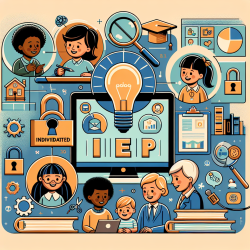In the ever-evolving field of communicative disorders, the integration of emerging technologies has become a cornerstone for advancing therapeutic practices and enhancing patient outcomes. The insightful peer commentary on "The Impact of Emerging Technologies on Audiology and Speech-Language Pathology" by Donald Jamieson, Nancy Thomas-Stonell, and Michael J. Saya provides a comprehensive overview of how these advancements are shaping the future of the profession. This commentary not only highlights the potential of these technologies but also underscores the importance of ongoing research and professional development to fully realize their benefits.
Technological advancements, such as signal processing, speech recognition, and computer-based speech training systems, have the potential to revolutionize the way speech-language pathologists and audiologists approach therapy. These tools offer innovative ways to diagnose, treat, and support individuals with communicative disorders, enabling more personalized and effective interventions. However, the adoption and implementation of these technologies also present challenges, including the need for specialized training and concerns about the accessibility and affordability of high-quality tools.
One of the key themes in the commentary is the importance of embracing these technologies not as replacements for traditional therapeutic methods but as complementary tools that can enhance the efficacy of interventions. For instance, speech recognition technology can provide immediate feedback on speech production errors, allowing for more targeted and efficient therapy sessions. Similarly, signal processing and enhancement technologies can improve the diagnostic capabilities of audiologists, leading to better-informed treatment plans.
Despite the clear benefits, the commentary also points out that the adoption of new technologies in the field has been slow, often due to financial constraints, lack of technical expertise, and insufficient evidence supporting their effectiveness. This highlights the need for increased investment in research to validate the use of these technologies in clinical settings. Furthermore, professional development programs and revised curricula that include training on emerging technologies are essential for preparing both current practitioners and future professionals to effectively utilize these tools.
The commentary also raises concerns about the potential for technology to alter the scope of practice for speech-language pathologists and audiologists. Automated speech training systems, for example, are being used by individuals without specialized training in communicative disorders, which could lead to suboptimal or even harmful interventions. This underscores the need for professionals in the field to take an active role in guiding the development and application of new technologies to ensure they are used safely and effectively.
Moreover, the integration of technology into therapy practices requires a thoughtful consideration of human factors, such as motivation and engagement. Traditional drill-and-practice software programs often lack the engaging, game-like elements that can motivate clients to participate in therapy. Research in behavioral technology, focusing on the design of more engaging and effective therapeutic software, is crucial for maximizing the benefits of these tools.
In addition to embracing new technologies, speech-language pathologists and audiologists must also be advocates for their clients, ensuring that technological advancements are accessible and affordable. This includes working with manufacturers to develop lower-cost, high-quality options and advocating for insurance coverage and funding support for these tools.
The commentary by Jamieson, Thomas-Stonell, and Saya serves as a call to action for professionals in the field of communicative disorders to actively engage with emerging technologies. By participating in research, seeking out professional development opportunities, and advocating for accessible and effective technological solutions, speech-language pathologists and audiologists can play a pivotal role in shaping the future of therapy for individuals with communicative disorders.
In conclusion, the integration of emerging technologies into the field of audiology and speech-language pathology offers immense potential to enhance therapeutic outcomes and improve the quality of life for individuals with communicative disorders. However, realizing this potential requires a concerted effort from professionals in the field to embrace these tools, invest in research and development, and ensure that technology is used in a way that complements and enhances traditional therapeutic methods. By doing so, we can ensure that our profession remains at the forefront of innovation and continues to provide the highest level of care to our clients.
To read the original research paper, please follow this link: Peer Commentary on "The Impact of Emerging Technologies on Audiology and Speech-Language Pathology".










